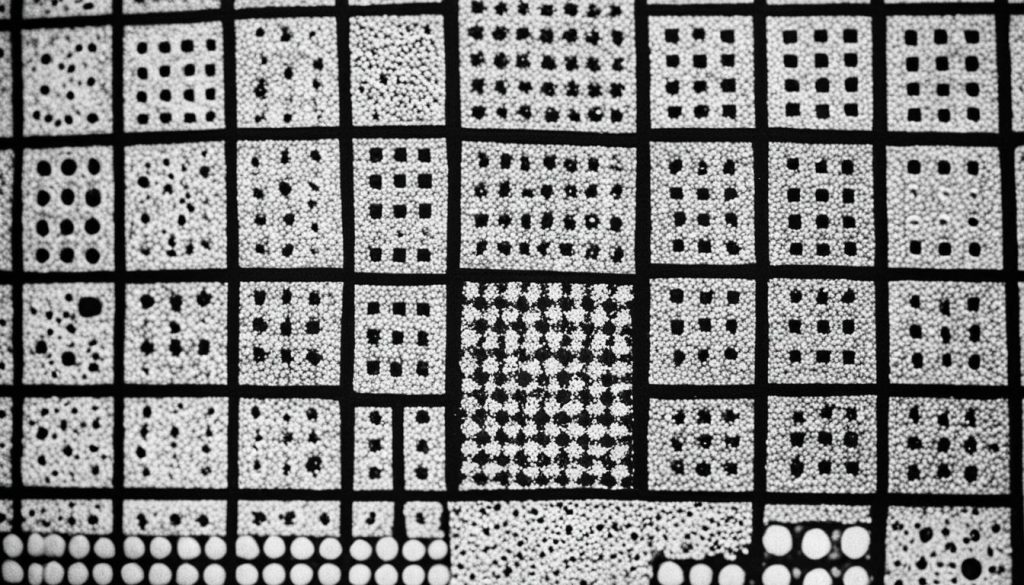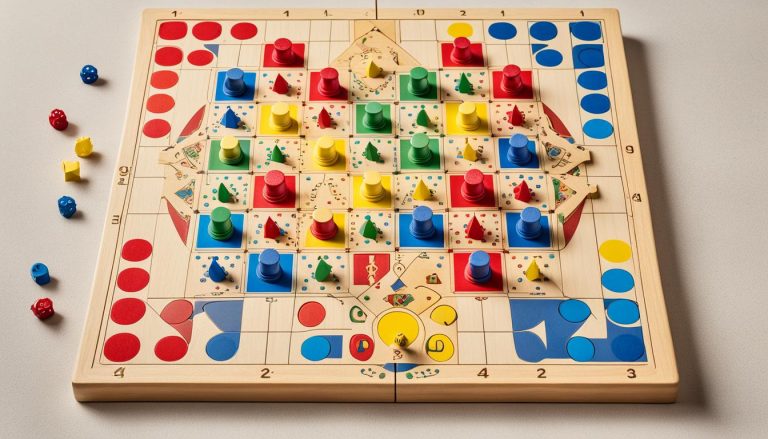Did you know that the Game of Life, a groundbreaking cellular automaton, can simulate incredibly complex behaviours using just a few simple rules? This two-dimensional universe, created by the brilliant British mathematician John Conway, has captivated mathematicians, computer scientists, and enthusiasts alike for decades. In this beginner’s guide, we’ll dive into the fascinating world of the Game of Life, exploring its origins, mechanics, and the mesmerising patterns that emerge from its simple foundations.
The Game of Life is one of the best examples in science of how a few simple rules can result in incredibly complex behaviour. Its inventor, John Conway, chose the rules specifically to produce the most unpredictable behaviour, and the resulting patterns have captivated mathematicians, computer scientists, and enthusiasts alike. From the iconic gliders and spaceships to the intricate Gosper’s Breeder, this cellular automaton offers a window into the remarkable emergence of order from chaos.
Whether you’re a seasoned programmer or a curious beginner, the Game of Life is a captivating exploration of the power of simple rules and the complex behaviours they can generate. Join us as we delve into the history, mechanics, and fascinating patterns of this iconic game of life simulator, and discover how you can start playing and even coding your own creations.
What is the Game of Life?
The Game of Life, also known as john Conway’s Game of Life, is a game-of-life cellular automaton invented by the renowned British mathematician John Conway in the late 1960s. It is a two-dimensional simulation that showcases how a few simple rules can generate remarkably complex and unpredictable patterns of behavior.
Origins and Creator
John Conway, a professor at Princeton University, deliberately chose a set of rules for the Game of Life that would produce the most unpredictable and dynamic outcomes. His innovative approach to this game of life history has captivated mathematicians, computer scientists, and enthusiasts worldwide, making it one of the most celebrated examples of game of life analysis and game of life algorithm.
Simple Rules, Complex Behaviour
The game of life rules original are remarkably straightforward, yet they give rise to an astounding array of complex and ever-changing patterns. This paradox, where new game of life rules can lead to such intricate behaviours, is a testament to the power and elegance of the Game of Life as a game of life cellular automaton and a true reflection of the natural world.
Understanding the Mechanics
The game of life cellular automaton is a captivating realm of possibilities, where the behavior of each cell is dictated by the state of its immediate neighbors. Let’s delve into the intricate mechanics that govern this fascinating universe.
The Life Universe and Grid
The game of life takes place on a simple square grid, where each cell can be either alive or dead. This two-dimensional universe is the canvas upon which complex patterns and behaviors emerge as the cells interact according to a set of precise rules.
Rules for Live Cells
For a live cell to remain alive in the next generation, it must have either two or three live neighbors. This delicate balance ensures that the cell’s lifespan is not extinguished prematurely, nor does it become overcrowded and suffocate.
Rules for Dead Cells
A dead cell will come to life in the next generation if it has exactly three live neighbors. This rule, known as “birth,” breathes new life into the game of life algorithm, allowing the patterns to evolve and transform in captivating ways.
These simple yet powerful game of life rules are the foundation upon which the game of life programming and game of life analysis thrive, unlocking a world of intricate and unpredictable patterns.
Fascinating Life Patterns
The world of the Game of Life is a captivating realm, showcasing an array of mesmerising patterns that emerge from the simplistic interplay of its rules. Among the most intriguing early shapes is the R-pentomino, a configuration of five live cells that defies the expected behaviour of smaller patterns.
The R-pentomino
While most patterns made up of up to five live cells either die out or become stable after just ten generations, the R-pentomino proves to be remarkably resilient. This pattern remains active for more than a thousand generations, unfolding a dazzling life cycle that has captivated game of life enthusiasts and analysts alike.
Gliders and Spaceships
Another class of fascinating game of life patterns are the gliders and spaceships. These dynamic structures are able to move across the grid, with gliders propagating in a diagonal direction and spaceships traveling in a linear path. The behavior of these ‘life-like cellular automata’ has become a subject of intense study as researchers delve into the complexities of their algorithms and explore their potential applications.
Eaters and Guns
Alongside the mesmerizing gliders and spaceships, the game of life also features intriguing patterns known as eaters and guns. Eaters are able to consume and ‘eat’ other patterns, while guns can create and ‘shoot’ new gliders. The interplay between these various life forms presents a captivating dance of creation, destruction, and perpetual motion within the game of life simulation.
Gosper’s Breeder
One of the most renowned and influential game of life patterns is the Gosper glider gun, created by the mathematician Bill Gosper. This intricate pattern is capable of repeatedly generating gliders, acting as a self-sustaining ‘breeder’ that can produce an endless stream of the iconic diagonal-moving structures. The Gosper glider gun stands as a testament to the profound complexity that can emerge from the game of life algorithms.

Emulating Logic Gates
One of John Conway’s early interests in the game of life cellular automaton was whether it could emulate the internal workings of a computer. To achieve this, specific game-of-life algorithms and patterns had to be designed to replicate the behavior of the three basic logic gates: the NOT, AND, and OR gates.
By carefully arranging the cells in the game of life programming, researchers were able to create patterns that could mimic the logic operations of these fundamental digital components. This not only demonstrated the computational power of the game of life analysis but also highlighted the rich potential for exploring emergent behaviors in this simple yet captivating system.

The ability to construct logic gates within the game of life opened up new avenues for further research and exploration. Scientists and enthusiasts continue to push the boundaries of what is possible, uncovering ever more complex and fascinating patterns that push the limits of our understanding of this deceptively simple yet infinitely intricate system.
How to Play Game of Life?
To fully immerse yourself in the captivating world of the Game of Life, let’s explore the step-by-step process of setting up and navigating this classic game. Whether you’re a seasoned player or a newcomer eager to learn, these instructions will guide you through the various stages of the Game of Life.
Setting Up the Board
To begin, place all the LIFE tiles face-down next to the game board. Take 4 of those tiles and position them face-down at the Millionaire Estates. Separate the game cards into 4 distinct piles—career cards, salary cards, house deed cards, and stock cards—and arrange them alongside the board. Additionally, divide the insurance policies and bank loans into 3 separate piles, ready for players to access during the game. Choose a player to serve as the banker, responsible for distributing funds to the participants. Each player starts with £10,000 and a car, as well as one people peg to represent their character.
Starting a Career or Going to College
At the start of the game, players can choose to either begin their career path or pursue a college education. By selecting a career card, individuals can take on various occupations, each with its own unique salary and responsibilities. Alternatively, opting for the college route allows players to expand their knowledge and potentially unlock more lucrative career opportunities down the line.
Moving Around the Board
The game board is divided into a grid, and players navigate this landscape by rolling a spinner or dice to determine the number of spaces they can move. As they traverse the board, players may encounter life events, such as marriage, children, or unexpected expenses, which can influence their financial and personal situations.
Collecting Salaries and Buying Assets
One of the key objectives in the Game of Life is to accumulate wealth and assets. Players can achieve this by collecting their salaries, which are determined by the career or college path they have chosen. Additionally, they can invest in valuable assets, such as houses, stocks, and insurance policies, to safeguard their financial well-being and increase their potential for future earnings.
By mastering these fundamental aspects of the Game of Life, players can embark on an engaging and immersive journey, navigating the twists and turns of life while striving to achieve their personal and financial goals.

Strategies and Tips
As players navigate the dynamic landscape of the Game of Life, employing savvy strategies and thoughtful decision-making can make all the difference in achieving success. From managing finances to balancing risks and rewards, and optimising career choices, this section explores the key considerations that can propel players towards their desired outcomes.
Managing Finances
Prudent financial management is crucial in the Game of Life. Players can purchase automobile insurance for £10,000 at the beginning of any turn, which protects their car from accidents, damage, and theft. Similarly, they can buy homeowner’s insurance for the amount specified on their house deed card to safeguard their home from natural disasters and theft. Additionally, players are able to buy one stock at the beginning of any turn for £50,000. Whenever a player spins the number listed on a stock card, they collect £10,000 from the bank. However, players can only own one stock at a time, requiring careful consideration of their investment decisions.
Balancing Risks and Rewards
The Game of Life presents players with a multitude of opportunities and challenges, each with its own set of risks and rewards. Carefully weighing the potential outcomes of various actions, such as pursuing higher-paying but riskier career paths or investing in stocks, can help players navigate the game’s complexities and maximise their chances of success. By striking a balance between caution and calculated risk-taking, players can navigate the Game of Life with confidence and resilience.
Optimising Career Choices
The selection of a career path is a pivotal decision in the Game of Life, as it can have far-reaching implications on a player’s financial stability, lifestyle, and overall success. Players must carefully consider their personal strengths, interests, and long-term goals when choosing a career, weighing the potential rewards against the demands and risks associated with each option. By making informed and strategic career choices, players can position themselves for greater financial security, personal fulfillment, and ultimately, a triumphant journey through the Game of Life.

Game of Life Simulators and Resources
Exploring the intriguing world of the Game of Life becomes even more captivating when you have access to powerful simulators and a wealth of online resources. Whether you’re a seasoned enthusiast or just beginning your journey into this cellular automaton, these tools and communities can greatly enhance your understanding and appreciation of the game.
Golly Simulator
One of the most popular and feature-rich Game of Life simulators is Golly. This free software allows you to create, manipulate, and observe a wide range of life patterns, from the simple to the breathtakingly complex. With Golly, you can witness the emergence of stunning structures like gliders, spaceships, and even Turing-complete constructions, all unfolding according to the game’s simple yet profound rules. The intuitive interface and extensive toolset make Golly a must-have for any game of life simulator enthusiast.
Online Resources and Communities
Beyond the Golly simulator, the internet is teeming with a wealth of game of life resources and thriving game of life communities. Websites like the Game of Life website (www.conwaylife.com) and the Game of Life Wiki provide in-depth information, tutorials, and a vast repository of patterns and algorithms. These resources are invaluable for understanding the game’s history, exploring novel strategies, and connecting with fellow aficionados who share your fascination.
Furthermore, online forums and discussion boards, such as the Game of Life subreddit (r/gameoflife) and the ConwayLife.com forums, offer a vibrant community where you can engage in discussions, share your discoveries, and learn from the collective expertise of other players. These game of life communities are a treasure trove of knowledge and inspiration, fuelling your exploration of this captivating cellular automaton.
Conclusion
The Game of Life is a remarkable example of how a few simple rules can lead to the emergence of incredibly complex and fascinating patterns. Its inventor, John Conway, chose the rules specifically to produce the most unpredictable behaviour, and the resulting patterns have captivated mathematicians, computer scientists, and enthusiasts alike.
The game’s history as a cellular automaton, its intricate simulations, and the broader field of life-like cellular automata have all contributed to its enduring appeal. Whether you’re exploring the game’s history, understanding its cellular automaton mechanics, or delving into the various patterns and strategies, the Game of Life offers a captivating glimpse into the power of simplicity to generate complexity.
As we’ve seen, the Game of Life is more than just a simple game; it’s a testament to the elegance and depth that can arise from a few well-chosen rules. From emulating logic gates to discovering mind-bending patterns, the Game of Life continues to fascinate and inspire those who seek to unravel the mysteries of the digital universe.
FAQ
Who invented the Game of Life?
The Game of Life was invented by the British mathematician John Conway, who is currently at Princeton University. He chose rules that produced the most unpredictable behaviour.
What are the rules of the Game of Life?
The Life universe is terribly simple. A square grid contains cells that are either alive or dead. The behaviour of each cell is dependent only on the state of its eight immediate neighbours, according to the following rules:
What is the R-pentomino pattern?
One of the most interesting early shapes was the R-pentomino. All patterns made up of up to five live cells die out or become stable after ten generations. But the R-pentomino is active for more than a thousand! Check out its dazzling life cycle.
Can the Game of Life emulate a computer?
One of Conway’s early interests was whether or not the Game of Life could emulate the internal workings of a computer. To do this, Life patterns had to be designed that could emulate the behaviour of the three basic logic gates: the NOT, AND and OR gates.
What tools are available to explore the Game of Life?
It’s great fun to have a go at making patterns yourself. This is easier than ever now with the free software Golly, the Game of Life simulator, which is what I used for all the videos.






